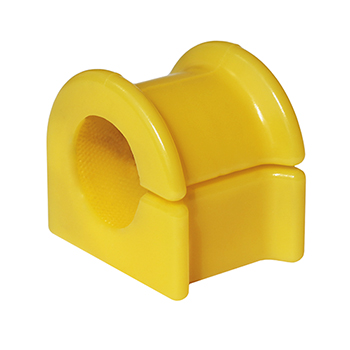When it comes to maintaining your vehicle’s suspension system, sway bar bushings play a crucial role. These small components, typically made of rubber or polyurethane, help stabilize your car during turns and reduce body roll. A common question among car enthusiasts and DIY mechanics is whether it’s necessary to grease sway bar bushings. This post aims to provide a comprehensive answer.
Understanding Sway Bar Bushings
Sway bar bushings, also known as anti-roll bar bushings, are essential for the proper functioning of your vehicle’s suspension system. They are mounted on the sway bar and connect it to the chassis, allowing the bar to pivot and absorb the impact from road irregularities, thereby enhancing stability and handling.
Rubber vs. Polyurethane Bushings
- Rubber Bushings: These are the most common type of sway bar bushings. They offer a quieter and softer ride but are prone to wear and tear over time.
- Polyurethane Bushings: These bushings are more durable and offer improved handling and performance. However, they can produce noise if not properly maintained.
The Role of Grease
Greasing sway bar bushings is often recommended for the following reasons:
- Noise Reduction: Polyurethane bushings, in particular, can be squeaky if not lubricated. Greasing them helps reduce or eliminate this noise.
- Wear and Tear: Proper lubrication reduces friction between the bushing and the sway bar, thereby extending the lifespan of the bushings.
- Performance: Greased bushings allow for smoother movement of the sway bar, leading to better handling and overall performance of the suspension system.
Should You Grease Rubber Bushings?
For rubber bushings, the need for grease is less critical. Rubber has self-lubricating properties and adding grease can sometimes cause the rubber to deteriorate faster. However, in certain conditions, light lubrication with a silicone-based grease can help reduce noise and wear.
Should You Grease Polyurethane Bushings?
Yes, it is generally recommended to grease polyurethane bushings. Unlike rubber, polyurethane does not have self-lubricating properties and can squeak when dry. Using a proper grease designed for polyurethane, typically a silicone or lithium-based grease, can prevent noise and ensure smooth operation.
How to Properly Grease Sway Bar Bushings
- Remove the Bushings: Carefully remove the sway bar bushings from the vehicle.
- Clean the Area: Ensure both the bushings and the area around them are clean to prevent dirt from causing additional wear.
- Apply Grease: Use a small amount of appropriate grease and apply it evenly around the inside of the bushing.
- Reinstall: Reinstall the bushings and secure them in place.
Conclusion
In summary, greasing sway bar bushings is generally necessary, especially for polyurethane bushings. It helps reduce noise, prevents wear, and improves the overall performance of your suspension system. For rubber bushings, the need for grease is less critical but can still be beneficial in certain situations.
Keep your vehicle running smoothly and enjoy a quieter, more comfortable ride by ensuring your sway bar bushings are properly maintained.


